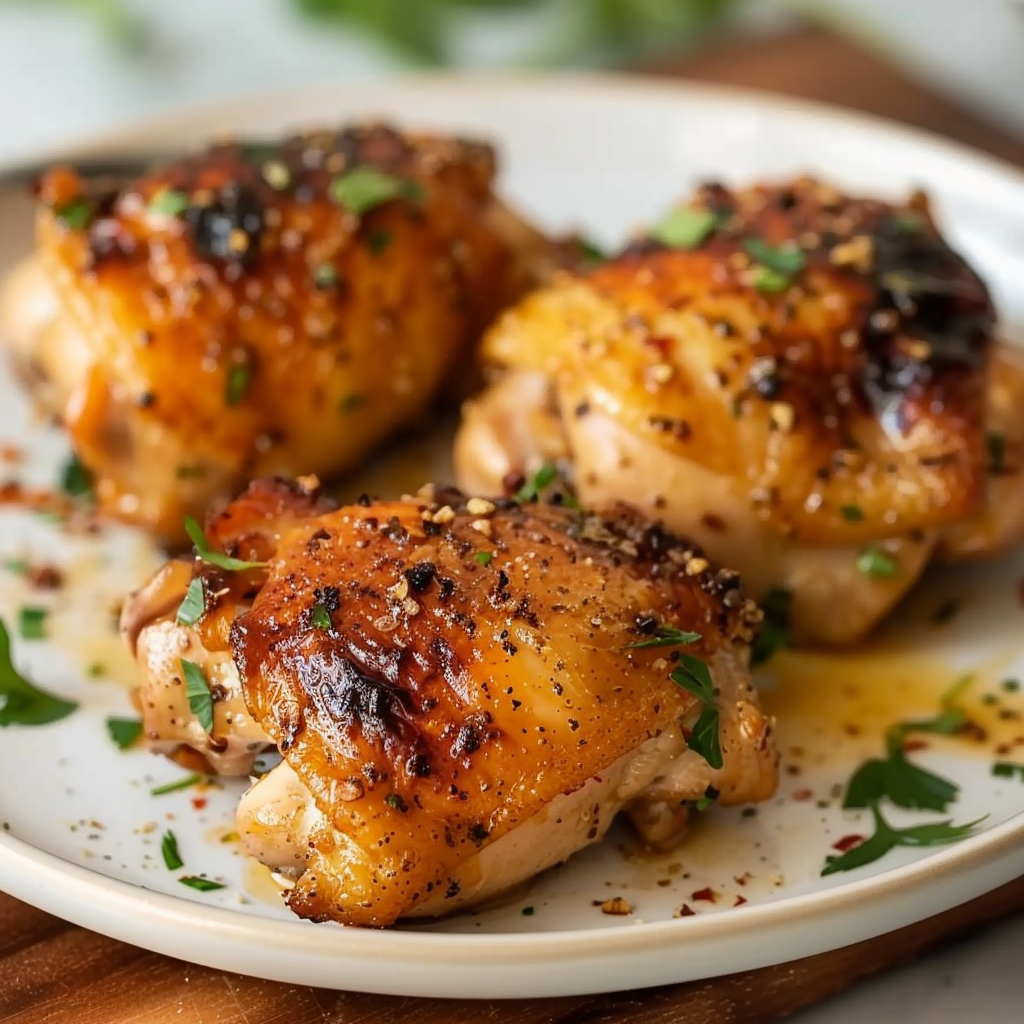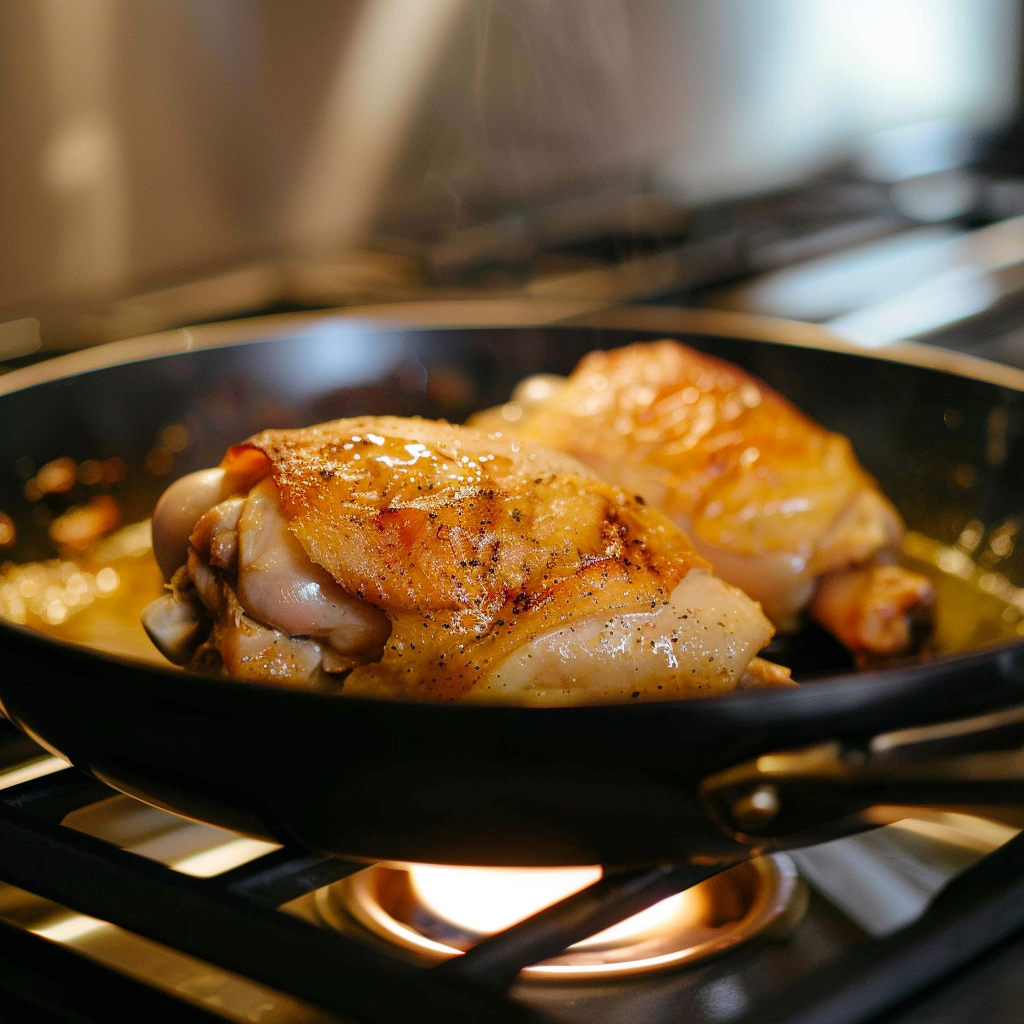Introduction to Boiling Chicken Thighs
Boiling chicken thighs is a simple yet versatile cooking method that can yield delicious and tender results. Whether you’re preparing a hearty soup, a flavorful broth, or simply want to enjoy succulent chicken thighs on their own, boiling is a technique that maximizes the natural flavors and textures of the meat. This method is particularly popular for its ease and convenience, making it an excellent choice for both novice and experienced cooks. In this guide, we’ll explore the step-by-step process of boiling chicken thighs, ensuring that each bite is juicy and flavorful.
Importance of Proper Cooking
Cooking chicken thighs properly is crucial for both taste and safety. Undercooked chicken can harbor harmful bacteria such as Salmonella, which can cause foodborne illnesses. On the other hand, overcooking can lead to dry, tough meat that is far from appetizing. By following the correct boiling techniques, you can achieve perfectly cooked chicken thighs that are safe to eat and bursting with flavor. Understanding the importance of cooking time and temperature control ensures that the meat remains tender and juicy.
Benefits of Boiling Chicken Thighs
Boiling chicken thighs offers several benefits that make it a favored method among many home cooks. Firstly, it is a low-fat cooking method that does not require the addition of oil or butter, making it a healthier option. Secondly, boiling helps in retaining the moisture within the chicken, resulting in tender meat that easily falls off the bone. Additionally, this method allows you to infuse the chicken with various seasonings and aromatics, enhancing its flavor profile. Boiled chicken thighs can also serve as a versatile ingredient for a variety of dishes, from salads and sandwiches to casseroles and more.
Preparation

Selecting Chicken Thighs
When it comes to selecting chicken thighs, you have two main options: fresh or frozen. Fresh chicken thighs tend to have a better texture and flavor, while frozen ones are convenient and have a longer shelf life. Additionally, you can choose between bone-in and boneless chicken thighs. Bone-in thighs generally have more flavor and moisture, while boneless thighs are easier to handle and cook more quickly.
Cleaning and Prepping Chicken Thighs
Proper cleaning and prepping are essential steps in ensuring your chicken thighs are ready for boiling. Start by removing any excess skin and fat, as these can add unwanted greasiness to your dish. Rinse the chicken thighs under cold water to remove any residual blood or impurities, then pat them dry with paper towels. This helps in achieving a cleaner, clearer broth if you’re using the boiling liquid as a base for soups or stews.
Necessary Equipment
To boil chicken thighs effectively, you’ll need a few key pieces of equipment. A large pot or pan is essential for accommodating the chicken and enough water or broth to cover it completely. A meat thermometer is also crucial to ensure the chicken reaches the safe internal temperature of 165°F (74°C). Timers can help you keep track of cooking time, preventing overcooking.
Ingredients Needed
The basic ingredients for boiling chicken thighs include seasonings, aromatics, and your choice of liquid. Common seasonings include salt, pepper, garlic, and bay leaves, which can enhance the natural flavor of the chicken. Aromatics like onions, carrots, and celery can be added to the boiling liquid for additional depth of flavor. You can use water, but using chicken broth or stock will yield a richer, more flavorful result.
Boiling Process: How Long to Boil a Chicken Thigh
Initial Steps: Preparing to Boil Chicken Thighs
To begin boiling chicken thighs, start by filling a large pot with enough water or broth to fully submerge the chicken thighs. Using broth instead of water can enhance the flavor of the chicken, especially if you plan to use the resulting liquid as a base for soups or sauces. Add aromatics and seasonings to the pot, such as bay leaves, garlic cloves, peppercorns, and a generous amount of salt. These ingredients will infuse the chicken with additional flavor as it cooks.
Placing Chicken Thighs in the Pot
When placing the chicken thighs in the pot, arrange them in a single layer to ensure even cooking. It’s important to avoid overcrowding the pot, as this can lead to unevenly cooked meat. Make sure the chicken thighs are fully submerged in the liquid. If necessary, add more water or broth to cover the chicken completely. Full submersion is crucial for even heat distribution and thorough cooking.
Bringing to a Boil: Starting the Cooking Process
Set your stove to high heat to bring the pot to a rolling boil. Starting with high heat initiates the cooking process effectively. Once the liquid reaches a boil, reduce the heat to a gentle simmer. Maintaining a simmer, rather than a rolling boil, ensures that the chicken cooks evenly and remains tender. Boiling too vigorously can cause the chicken to become tough and dry.
Cooking Time: How Long to Boil Chicken Thighs
The cooking time for chicken thighs depends on whether they are bone-in or boneless, as well as if they are fresh or frozen. Bone-in chicken thighs typically require 30-40 minutes of simmering to cook through, while boneless thighs usually take about 20-30 minutes. If you’re cooking frozen chicken thighs, add an additional 10-15 minutes to the cooking time. Always check the doneness of the chicken rather than relying solely on time, as factors like the size of the thighs and the specific boiling conditions can affect cooking duration.
Checking Doneness: Ensuring Properly Cooked Chicken
To confirm the chicken thighs are thoroughly cooked, use a meat thermometer. The internal temperature should reach 165°F (74°C). Additionally, you can check for visual and texture indicators. The meat should be opaque and firm to the touch, and the juices should run clear when the chicken is pierced with a fork. If the chicken is still pink or the juices are bloody, continue simmering and recheck every few minutes.
Adjusting Cooking Time for Different Recipes
Depending on the dish you’re preparing, you might need to adjust the cooking time or method slightly. For soups and stews, you can allow the chicken thighs to cook a bit longer to develop a richer flavor in the broth. The chicken will continue to tenderize as it simmers with other ingredients. For standalone dishes, once the chicken reaches the desired doneness, you can remove it from the pot and let it rest before serving. This ensures the chicken remains juicy and flavorful when eaten on its own.
By following these steps, you’ll achieve perfectly boiled chicken thighs that are tender, flavorful, and ready to be enjoyed in a variety of dishes.
Post-Cooking Steps to how long to boil a chicken thigh
Resting the Chicken Thighs
Importance of Resting
Resting chicken thighs after boiling is a crucial step that allows the juices to redistribute throughout the meat, ensuring each bite is tender and flavorful. Cutting into the chicken immediately after cooking can cause the juices to escape, resulting in drier meat. Resting also helps the chicken retain its moisture and texture, making it more enjoyable to eat.
Methods of Resting
To rest the chicken thighs, remove them from the pot and place them on a cutting board or a plate. Loosely cover the chicken with aluminum foil to retain its warmth. Let the chicken rest for about 5-10 minutes. This short resting period is sufficient to allow the juices to settle and the meat to reach its optimal texture.
Cutting and Serving
Slicing Techniques
When it comes to cutting the chicken thighs, use a sharp knife to make clean, precise cuts. For bone-in thighs, cut the meat away from the bone in smooth strokes, slicing against the grain to ensure tender pieces. For boneless thighs, slice them into strips or bite-sized pieces, depending on your recipe or serving preference. Cutting against the grain helps maintain the tenderness of the meat.
Presentation Tips
Presentation can enhance the dining experience. Arrange the sliced chicken thighs neatly on a serving platter. Add fresh herbs such as parsley or cilantro for a pop of color and enhanced flavor. If you’re serving the chicken as part of a larger dish, such as a salad or a pasta, arrange the chicken pieces evenly throughout to ensure each serving has a generous amount of chicken.
Storing Leftovers
Refrigeration Guidelines
If you have leftover boiled chicken thighs, proper storage is essential to maintain their quality and safety. Place the cooled chicken in an airtight container and store it in the refrigerator. Leftover chicken should be consumed within 3-4 days. Ensure that the refrigerator temperature is set to 40°F (4°C) or below to keep the chicken fresh and prevent bacterial growth.
Freezing Guidelines
For longer storage, you can freeze the boiled chicken thighs. Wrap each thigh individually in plastic wrap or aluminum foil to prevent freezer burn, then place the wrapped pieces in a resealable freezer bag or an airtight container. Mark the container with the date to monitor the storage duration of the chicken. Boiled chicken thighs can be frozen for up to 4 months. When you’re ready to use the frozen chicken, thaw it in the refrigerator overnight before reheating.
By following these post-cooking steps, you can ensure that your boiled chicken thighs remain delicious and safe to eat, whether you’re enjoying them immediately or storing them for later use.
Health Considerations of boil one chicken thigh

Nutritional Benefits of boil one chicken thigh
Protein Content
Chicken thighs are an excellent source of high-quality protein, essential for muscle repair and growth. A typical serving of boiled chicken thighs provides about 20-25 grams of protein, making it a substantial addition to your diet. Protein is not only crucial for building and repairing tissues but also plays a vital role in producing enzymes and hormones.
Vitamins and Minerals
Boiled chicken thighs are rich in several essential vitamins and minerals. They are a good source of B vitamins, particularly niacin (B3) and vitamin B6, which are important for energy metabolism and maintaining brain health. Additionally, chicken thighs contain minerals such as phosphorus, which supports healthy bones and teeth, and selenium, an antioxidant that helps protect cells from damage and supports the immune system.
Healthier Cooking Alternatives
Steaming
Steaming is a healthy cooking alternative that preserves the nutrients in chicken thighs while keeping them tender and moist. By cooking the chicken with steam rather than boiling water, you can avoid the loss of water-soluble vitamins. Steaming also allows for the use of minimal added fats, making it an excellent option for those looking to reduce calorie intake.
Baking
Baking chicken thighs is another healthy alternative that can enhance flavor without the need for excessive fats. Baking allows the chicken to cook evenly while developing a delicious, slightly crispy exterior. To keep the dish healthy, use a minimal amount of oil or opt for healthier oils like olive oil. Season the chicken with herbs and spices to add flavor without adding extra calories or sodium.
Avoiding Common Mistakes
Overcooking
One common mistake when boiling chicken thighs is overcooking them, which can result in dry, tough meat. To avoid this, monitor the cooking time closely and use a meat thermometer to check the internal temperature. Once the chicken reaches 165°F (74°C), it’s done. Overcooking can also cause the meat to lose its flavor and nutritional value, so it’s crucial to remove the chicken from the heat as soon as it’s fully cooked.
Underseasoning
Underseasoning is another common error that can make boiled chicken thighs taste bland. To enhance the flavor of your chicken, season the water or broth generously with salt, pepper, garlic, bay leaves, and other herbs and spices. Adding aromatics like onions, carrots, and celery to the boiling liquid can also impart additional flavor to the chicken. Seasoning both the liquid and the chicken itself ensures that the meat is flavorful throughout.
By understanding these health considerations, you can make the most of your boiled chicken thighs, ensuring they are not only delicious but also nutritious and beneficial for your overall health.
FAQs to How long does it take to boil one chicken thigh
How long does it take to boil one chicken thigh?
It takes about 20-30 minutes to boil one boneless chicken thigh. For bone-in chicken thighs, the cooking time is approximately 30-40 minutes.
How long does it take to boil one chicken leg?
Boiling one chicken leg typically takes about 30-40 minutes. Make sure the chicken reaches an internal temperature of 165°F (74°C) for safe consumption.
How long does it take to boil chicken?
The boiling time for chicken varies depending on the cut and size. Boneless pieces generally take 20-30 minutes, while bone-in pieces like thighs and legs take 30-40 minutes.
How do you know if boiled chicken is done?
Boiled chicken is done when it reaches an internal temperature of 165°F (74°C). The meat should be opaque and firm, with clear juices running when pierced.

1 thought on “How Long to Boil a Chicken Thigh”